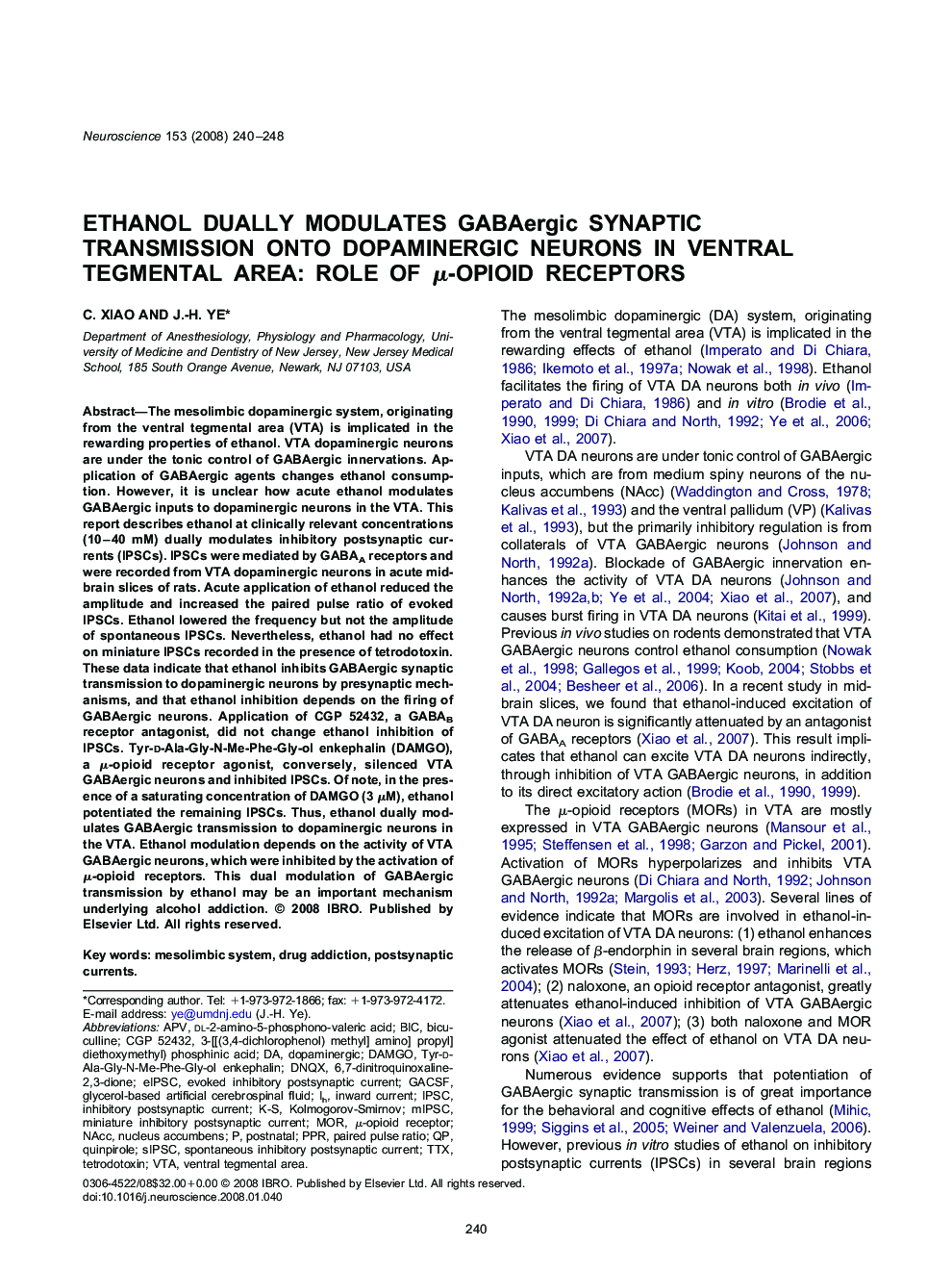| Article ID | Journal | Published Year | Pages | File Type |
|---|---|---|---|---|
| 4340632 | Neuroscience | 2008 | 9 Pages |
Abstract
The mesolimbic dopaminergic system, originating from the ventral tegmental area (VTA) is implicated in the rewarding properties of ethanol. VTA dopaminergic neurons are under the tonic control of GABAergic innervations. Application of GABAergic agents changes ethanol consumption. However, it is unclear how acute ethanol modulates GABAergic inputs to dopaminergic neurons in the VTA. This report describes ethanol at clinically relevant concentrations (10-40 mM) dually modulates inhibitory postsynaptic currents (IPSCs). IPSCs were mediated by GABAA receptors and were recorded from VTA dopaminergic neurons in acute midbrain slices of rats. Acute application of ethanol reduced the amplitude and increased the paired pulse ratio of evoked IPSCs. Ethanol lowered the frequency but not the amplitude of spontaneous IPSCs. Nevertheless, ethanol had no effect on miniature IPSCs recorded in the presence of tetrodotoxin. These data indicate that ethanol inhibits GABAergic synaptic transmission to dopaminergic neurons by presynaptic mechanisms, and that ethanol inhibition depends on the firing of GABAergic neurons. Application of CGP 52432, a GABAB receptor antagonist, did not change ethanol inhibition of IPSCs. Tyr-d-Ala-Gly-N-Me-Phe-Gly-ol enkephalin (DAMGO), a μ-opioid receptor agonist, conversely, silenced VTA GABAergic neurons and inhibited IPSCs. Of note, in the presence of a saturating concentration of DAMGO (3 μM), ethanol potentiated the remaining IPSCs. Thus, ethanol dually modulates GABAergic transmission to dopaminergic neurons in the VTA. Ethanol modulation depends on the activity of VTA GABAergic neurons, which were inhibited by the activation of μ-opioid receptors. This dual modulation of GABAergic transmission by ethanol may be an important mechanism underlying alcohol addiction.
Keywords
Related Topics
Life Sciences
Neuroscience
Neuroscience (General)
Authors
C. Xiao, J.-H. Ye,
